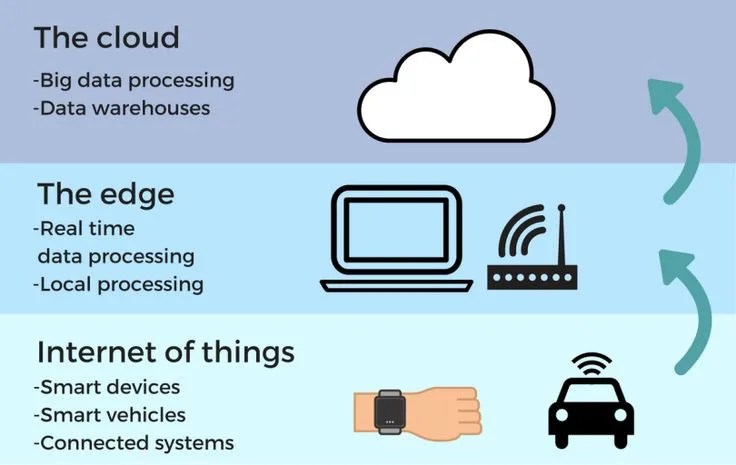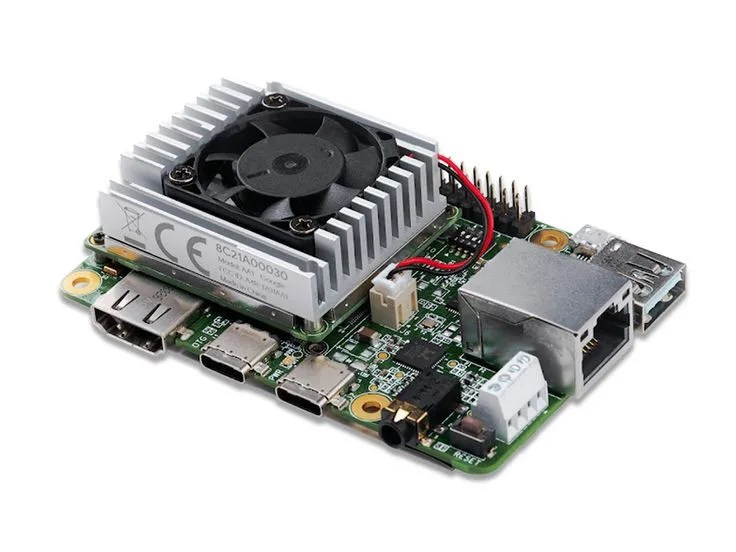Table of Contents
Introduction
In today’s fast-paced digital world, real-time data processing is crucial for businesses, smart devices, and automation. Edge AI is revolutionizing the way data is processed by shifting computations closer to the source—right on the device itself. This reduces latency, improves efficiency, and minimizes dependency on cloud computing.
In this guide, we’ll break down what Edge AI is, why it matters, and how you can use it to achieve faster data processing.
What is Edge AI?
Edge AI combines artificial intelligence (AI) and edge computing to enable data processing directly on local devices, rather than relying on a centralized cloud server. This means AI models can analyze and act on data in real time, significantly reducing delays.

How Edge AI Works
- AI models are embedded in edge devices like cameras, IoT sensors, and industrial machines.
- These devices process data locally instead of sending it to a cloud-based AI system.
- The results are delivered instantly, improving efficiency and speed.
Why Edge AI is Essential for Faster Data Processing
1. Reduces Latency and Enhances Real-Time Performance
Processing data locally eliminates the need to send it to cloud servers, reducing response time from milliseconds to microseconds. This is crucial for applications like self-driving cars and real-time security monitoring.
2. Saves Bandwidth and Reduces Cloud Costs
Since less data is sent to the cloud, Edge AI reduces bandwidth consumption and lowers expenses related to cloud storage and processing.
3. Improves Security and Privacy
Keeping sensitive data on local devices instead of transmitting it across networks reduces the risk of data breaches and unauthorized access.

4. Operates Even in Low-Connectivity Environments
Edge AI continues functioning even in remote locations or areas with limited internet access, making it ideal for industrial automation, agriculture, and disaster response systems.
How to Implement Edge AI for Faster Data Processing
Step 1: Choose the Right Edge AI Hardware
Different hardware options provide varying levels of performance, depending on your use case.
Popular Edge AI Devices:
- NVIDIA Jetson Series – Powerful AI processing for robotics and automation.
- Google Coral – Optimized for machine learning applications.
- Intel Movidius – Designed for computer vision tasks.
- Qualcomm Snapdragon AI – Ideal for mobile and IoT applications.

Step 2: Select an AI Framework
To develop and run AI models efficiently, you’ll need a framework that supports Edge AI processing.
Recommended AI Frameworks:
- TensorFlow Lite – A lightweight version of TensorFlow optimized for mobile and edge devices.
- OpenVINO (Intel) – Accelerates deep learning inference on edge devices.
- NVIDIA TensorRT – Optimized for high-performance AI inference.
Step 3: Train and Optimize Your AI Model
Before deploying AI models to edge devices, they must be optimized for efficient performance.
Key Optimization Techniques:
- Model Pruning – Reducing unnecessary parameters to speed up inference.
- Quantization – Lowering precision to improve performance without significant accuracy loss.
- Knowledge Distillation – Training a smaller model to mimic a larger one.
Step 4: Deploy AI Models to Edge Devices
After training and optimizing, deploy the AI model directly onto the edge device. This may involve converting the model into a compatible format, such as TensorFlow Lite or ONNX, and using software development kits (SDKs) to integrate it into applications.

Step 5: Monitor and Update Edge AI Models
AI models need continuous monitoring and updating to improve performance and accuracy. Use AI lifecycle management tools to track model performance and push updates as needed.
Use Cases of Edge AI for Faster Data Processing
1. Smart Surveillance and Security
Edge AI-powered cameras can analyze video footage in real-time, detecting threats, recognizing faces, and triggering alerts without needing a cloud connection.

2. Healthcare and Medical Devices
Wearable health monitors use Edge AI to process patient data instantly, providing real-time diagnostics and alerts for conditions like irregular heartbeats.
3. Industrial Automation and Robotics
Factories use Edge AI for predictive maintenance, reducing downtime by detecting machine failures before they happen.
4. Autonomous Vehicles
Self-driving cars rely on Edge AI for instant decision-making, enabling them to recognize obstacles, traffic signals, and pedestrians in real time.
5. Smart Retail and Customer Experience
Retail stores use Edge AI-powered cameras to track customer behavior, optimize shelf stocking, and provide personalized shopping experiences.
Challenges of Edge AI and How to Overcome Them
1. Limited Computing Power
Since edge devices have lower processing capabilities than cloud servers, AI models must be lightweight and optimized.
Solution: Use AI model compression techniques like pruning and quantization.

2. Hardware Compatibility Issues
Different AI models may not be compatible with all edge devices.
Solution: Choose AI frameworks and models that support multiple hardware platforms (e.g., TensorFlow Lite, ONNX).
3. Security Concerns
Processing sensitive data locally increases the risk of physical tampering.
Solution: Implement strong encryption and secure boot processes for edge devices.

Conclusion
Edge AI is transforming how we process data, making it faster, more efficient, and less dependent on cloud computing. Whether it’s for security, healthcare, automation, or retail, using Edge AI can significantly enhance real-time data processing. By choosing the right hardware, AI framework, and optimization techniques, you can unlock the full potential of Edge AI for your applications.
FAQs
1. What is the difference between Edge AI and Cloud AI?
Edge AI processes data locally on devices, while Cloud AI relies on remote servers. Edge AI reduces latency and enhances privacy, whereas Cloud AI provides more computing power.
2. Can Edge AI work without an internet connection?
Yes, Edge AI operates locally, making it ideal for environments with poor or no internet connectivity.
3. What industries benefit the most from Edge AI?
Industries like healthcare, security, manufacturing, and autonomous vehicles benefit significantly from real-time Edge AI processing.
4. Is Edge AI expensive to implement?
While specialized hardware may have upfront costs, Edge AI reduces long-term cloud storage and processing expenses, making it cost-effective.
5. How do I update AI models on edge devices?
AI models can be updated using remote management tools that allow businesses to push new models and software updates to edge devices.



